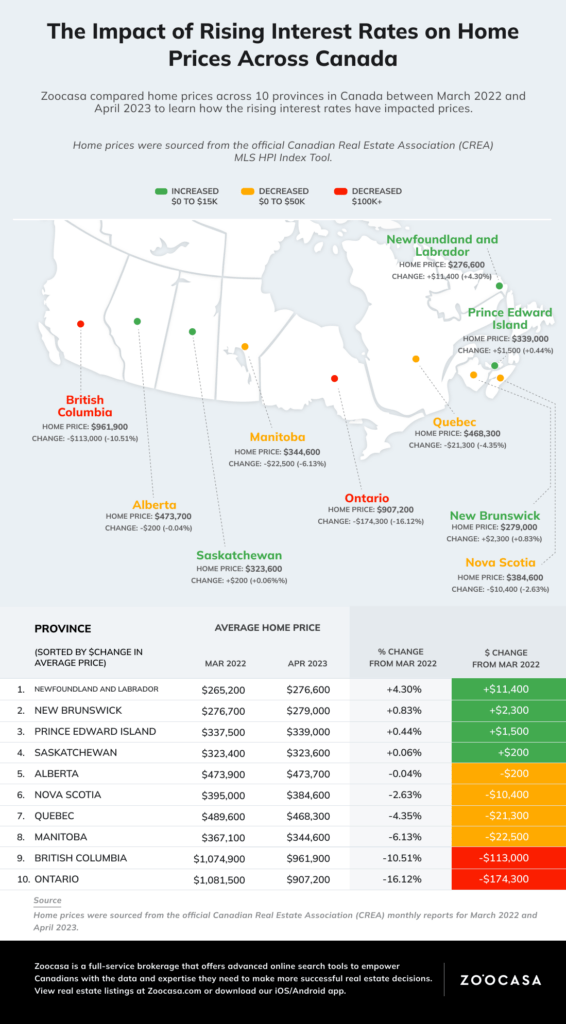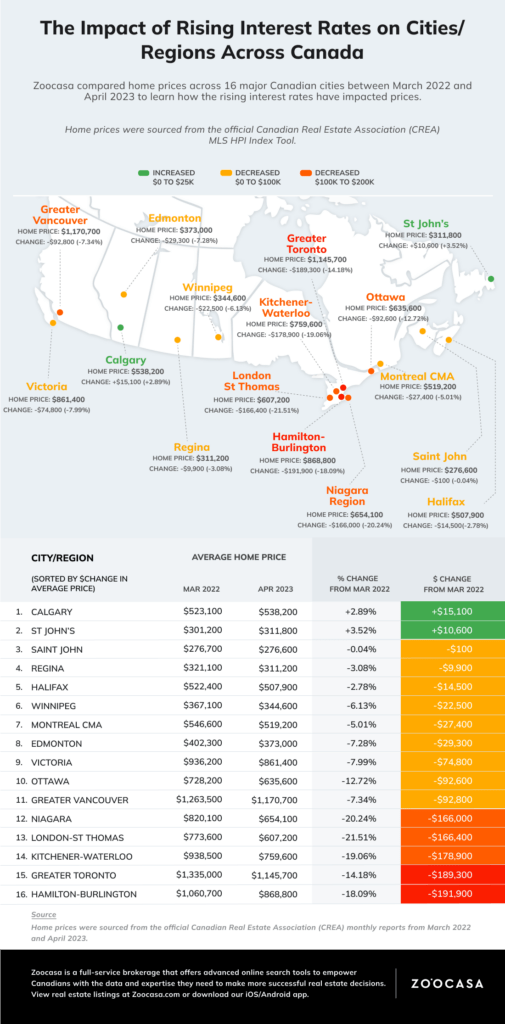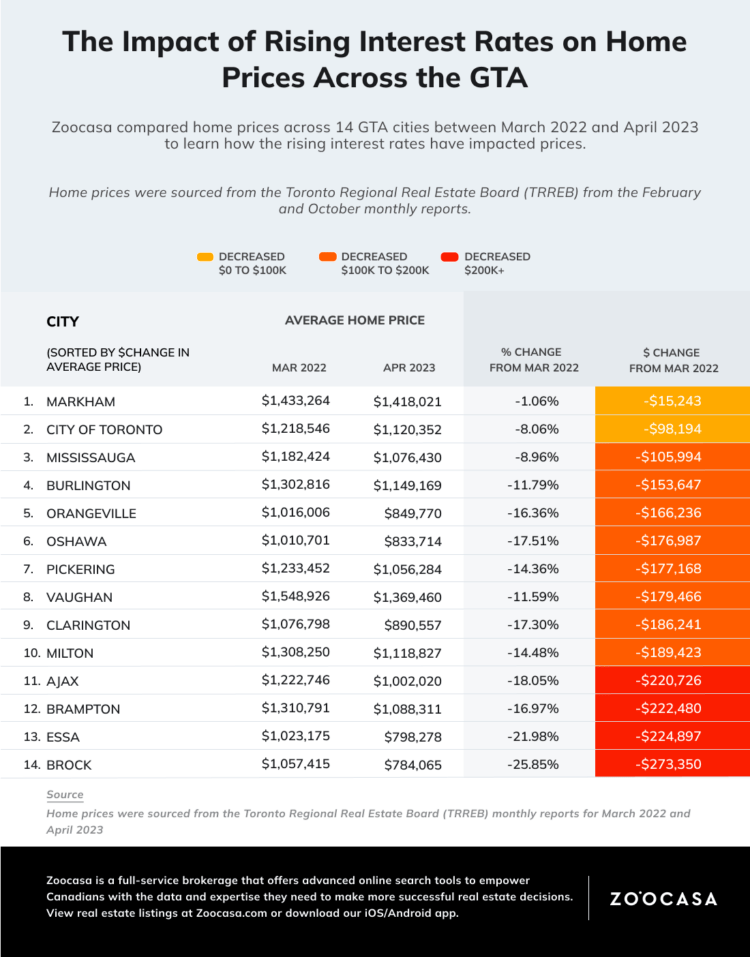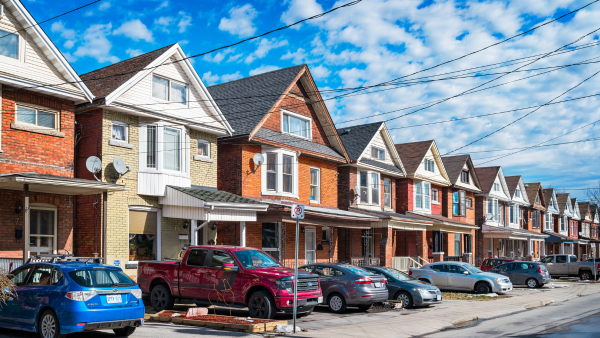The dominant story of the Canadian real estate market throughout 2022 was the impact of rising interest rates. The lending rate was just 0.5% in February, but after six increases throughout the year by the Bank of Canada it ended up at 4.25%. There was a further increase in January 2023 to 4.5%, but the Bank has held steady since then.
As rates have changed, so have prices. The record price highs seen early in the year were impacted by the rate hikes, but as 2023 has gone on those have slowly started creeping up again. To find out how prices have changed since rate hikes began, we analyzed data for major provinces and cities across Canada, as well as the GTA.
How Home Prices Across Canada Have Changed Since February 2022


Canada’s most expensive provinces have had the largest price dips since rate hikes began. British Columbia’s price has fallen by $113,000, while Ontario has suffered the largest dip at $174,300, declines of 10.51% and 16.12% respectively.
Meanwhile, the four most affordable provinces have all felt price increases. Interest rate hikes have not hit these provinces as hard, as the much more affordable home price has meant the cost of a mortgage wouldn’t have as steep of an increase as it would in British Columbia or Ontario. Newfoundland and Labrador’s average home price has increased by $11,400, up 4.3% since rate hikes began. Alberta has stayed relatively flat in that time, with a price difference of just $200, with the average price now at $473,700.


Looking at some of the major cities across Canada provides another perspective. Using data provided by the Canadian Real Estate Association (CREA), we took a more in-depth look at some of the major cities across Canada to see if prices reflected the numbers of their provinces.
Ontario has been hit the hardest, with the top five cities with the greatest declines all being in the province. The largest of those declines are in Toronto and Hamilton–Burlington, with prices falling by $189,300 and $191,900 respectively. London–St. Thomas has had the greatest percentage decline of 21.51% to a price of $654,100, down $166,400. Despite Alberta remaining relatively steady, Calgary’s increased popularity and more affordable housing has contributed to the price increases the city is seeing. Home prices have risen by $15,100 since February 2022, while St John’s, another of Canada’s most affordable cities, has felt price increases of $10,600.


As Ontario has had the largest dips across the country, we took a closer look at major markets in the GTA using data provided by the Toronto Regional Real Estate Board (TRREB).
Every city in the GTA has seen some form of price decline. Markham was the least impacted, with a decline of $15,243, just a 1.06% drop to $1,418,021. The only other city not to suffer a drop of over $100,000 was Toronto, where the average price fell by $98,194. Four cities have had declines of over $200,000 – Ajax, Brampton, Essa and Brock, with Brock being hit the hardest. Prices fell in the city by $273,350, a decline of 25.85%.
Despite the declines since rate hikes began, prices have been on the rise again during 2023 in Toronto. Home prices increased by 4% on a monthly basis from March to April. As markets have settled and buyers and sellers have adjusted to the impact, more homes have started moving, while the short supply means that demand outweighs the available supply, resulting in home prices steadily increasing.
Enjoying our content? Subscribe to our free weekly newsletter to get Canadian real estate market insights, news, and reports straight to your inbox.
If you’re looking to get into the real estate market, why not give us a call? We can help find the perfect home for you this summer!















